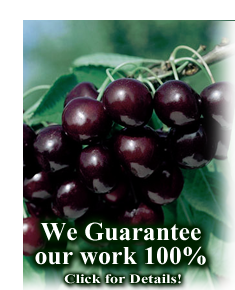|
|
| BACK TO TOP |
| Apple | Red Delicious | Dark red fruit with tender juicy flesh. Holds crispness and flavor. Good for home use. Hardy, high yielding tree. | Mid-Season Bloomer; requires another apple variety for pollination. | Call for Pricing | 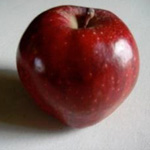 |
| Apple | McIntosh | Aromatic fruit with slight tangy flavor. Firm, crisp flesh ideal for eating fresh, cooking, or making cider. Ripens early. Needs pollenizer | Mid-Season Bloomer; requires another apple variety for pollination. | Call for Pricing | 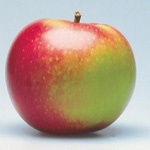 |
| Apple | Granny Smith | Very large fruit with firm, tart flesh. Excellent for pies and sauce. Late ripening. Self-fruitful. | Mid-Season Bloomer; requires another apple variety for pollination. | Call for Pricing | 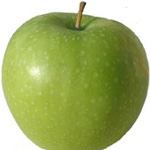 |
| Apple | Gala | Gala apples are small and are usually red with a portion being greenish or yellow-green, vertically striped. Gala apples are fairly resistant to bruising and are sweet, grainy, with a mild flavor and a thinner skin than most apples. | Mid-Season Bloomer; requires another apple variety for pollination. | Call for Pricing |  |
| Apple | Fuji | Typically large, or very large and round. One of the most popular dessert apples, Fuji has mild, sweet flavor and fine-textured, juicy yellowish flesh. Stores very well and stays crisp, both at room temperature and refrigerated. | Mid-Season Bloomer; requires another apple variety for pollination. | Call for Pricing |  |
| Apple | Honeycrisp | Oblate to roundly oblate in shape. The fruit surface has shallow dimples and numerous, small lenticels (dots). It is characterized by an exceptionally crisp and juicy texture. Its flesh is cream colored and coarse. | Mid-Season Bloomer; requires another apple variety for pollination. | Call for Pricing | 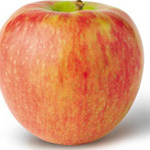 |
| Apple | Golden Delicious | Golden Delicious is a large, yellow skinned cultivar and very sweet to the taste. It is prone to bruising and shriveling, so it needs careful handling and storage. | Mid- Season Bloomer; Self-Pollinating | Call for Pricing | 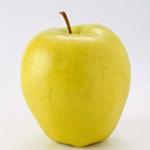 |
| Apple | Pink Lady | A cross between the Golden Delicious and Lady Williams apples. Unique sweet-tart flavor described as "Gala with a zing!" Pink Lady is great for eating raw and for baking. | Mid-Season Bloomer; requires another apple variety for pollination. | Call for Pricing |  |
| Apple | North Pole | Large, bright red McIntosh-type apples are crisp, juicy and highly aromatic. Ripens early September. | Requires another apple variety for pollination. | Call for Pricing | 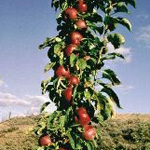 |
| Apple | Yellow Delicious | A Large golden apple that ripens late with a fine, sweet flavor. Home use for eating, pies, sauces, and preserves. | Requires another apple variety for pollination. | Call for Pricing | 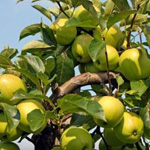 |
| Apple | Cortland | This productive tree bears gorgeous ruby red apples with a snowy center that won?t brown. Most similar to McIntosh apples. Ripens in mid September. | Requires another apple variety for pollination. | Call for Pricing | 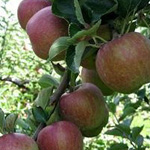 |
| Apple | Golden Sentinel Columnar | Very large and attractive golden-yellow apples are sweet, juicy and delicious. Ripens mid-September. | Requires another apple variety for pollination. | Call for Pricing | 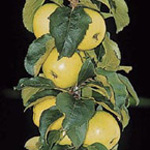 |
| Apple | Scarlet Sentinel Columnar | Large, delicious, greenish-yellow fruit with an attractive red blush. Dense clusters of white flowers are followed by abundant, closely spaced fruit. Very productive and disease resistant and non-branching. The most dwarfing of the Columnar varieties. | Requires another apple variety for pollination. | Call for Pricing | 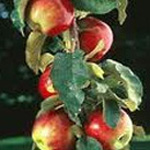 |
| BACK TO TOP |
| Apricot | Moorpark | The Moorpark Apricot Tree is the best red apricot with a rich, luscious flavor. This large firm apricot is a favorite for eating fresh. The Moorpark Apricot Tree ripens late June to early July. | Self-Pollinating | Call for Pricing | 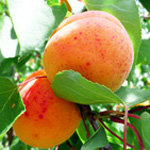 |
| BACK TO TOP |
| Banana | 'veinte cohol' Banana Tree | This Banana varient is scientifically named 'veinte cohel' from the Philippines . It is the fastest fruiting banana tree and great for areas with short growing seasons. It produces 3-4" long plump bananas that are soft and sweet. | Self-Pollinating | Call for Pricing | 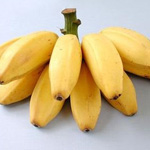 |
| Banana | Dwarf Cavendish | This is the most popular greenhouse banana varient and can bear bunches containing as many as 90 bananas that are slightly shorter than the bananas sold at grocery stores. Fast grower. | Self-Pollinating | Call for Pricing | 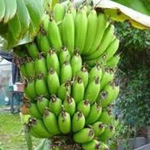 |
| Banana | Double Mahoi Banana | This Banana varient is a mutation of the common Dwarf Cavendish Banana. It usually produces 2 heads with multiple branches of fruit. The fruit is sweet and the tree can be highly productive. | Self-Pollinating | Call for Pricing | 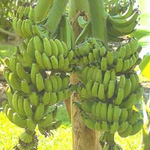 |
| Banana | Dwarf Red Banana | This is a red-skinned banana varient that stays short and takes up little space. They usually take longer than regular bananas to ripen but they have a distinct, great tasting flavor. The skin should be almost very dark red before it is ripe enough to eat. The leaves of this banana plant are also great for wrapping and grilling meats. | Self-Pollinating | Call for Pricing | 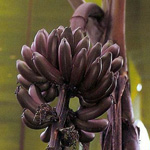 |
| Banana | 'Gran Nain' Chiquita Banana | This is the variety that you will find at the grocery store. The 'Gran Nain' produces very large heads of delicious fruit. It is a very quick ripening. 'Gran Nain' has no problem producing 40-60 lbs of fruit. | Self-Pollinating | Call for Pricing | 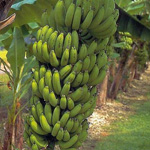 |
| Banana | Little Prince Banana | This is an extremely dwarf banana varient that has a maximum height of 24-30". Great for indoor or outdoor growing. | Self-Pollinating | Call for Pricing | 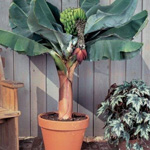 |
| |
| Blackberry | Natchez Blackberry | This thornless blackberry variant produces large fruit in constant yields. Natchez is also resistant some fungal diseseases that harm other variants in the south. | Self-Pollinating | Call for Pricing |  |
| Blackberry | Arapaho Blackberry | This is a thronless blackberry variant that does well in the south with medium chill. | Self-Pollinating | Call for Pricing | 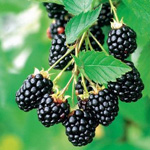 |
| Blackberry | Navaho Blackberry | This blackberry variant is thronless and grows erect. The bright shiny-black berries ripen to sweetness in early July. | Self-Pollinating | Call for Pricing | 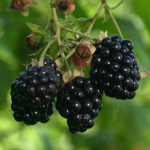 |
| BACK TO TOP |
| Blueberry | Climax | Ripening early, these berries are medium to large with a dark blue color and a very good flavor. Climax has concentrated ripening with few shriveled or overripe fruit. The shrub has an open and upright habit. | Self-Pollinating | Call for Pricing |  |
| Blueberry | Premier | Bumper crops are produced with the distinctive powdery blue color on the large firm berries. The flavor is excellent, and the berries store well. The plant growth is vigorous ad upright. Ripens mid-late season. | Self-Pollinating | Call for Pricing |  |
| Blueberry | Tifblue | Bearing mid to late season, Tifblue is a very popular and productive variety. The berries are light blue, very firm and quite flavorful. Plant growth is vigorous and upright often used for ornamental hedges. It is the most winter hardy variety.� | Self-Pollinating | Call for Pricing | 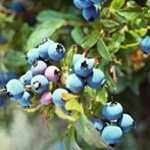 |
| Blueberry | Brunswick | A native to the eastern U.S., the lowbush has great promise as an ornamental groundcover growing 8-12? high and 3-4 ft wide. Profuse white blooms yield small sized light blue fruit, and the dark glossy foliage turns bright red-orange in the fall. The berries have a ?wild? blueberry flavor and high antioxidant levels. Annual pruning is not necessary, but the plants yield best if 2/3 of the growth is sheared back every third year in late winter. | Self-Pollinating | Call for Pricing | 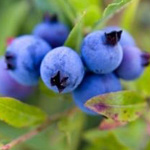 |
| Blueberry | Sunshine Blue | This semi-dwarf, versatile evergreen blueberry features showy hot pink flowers that fade to white in spring, yielding large crops of delicious berries. Sunshine Blue tolerates higher pH soils better than many other blueberries and it is self-pollinizing. The low chilling requirement of 150 hours makes it suitable for warmer climates, but we find it is surprisingly cold-hardy and a wonderful addition to any garden. Excellent ornamental variety. Sweet medium sized berries. | Self-Pollinating | Call for Pricing | 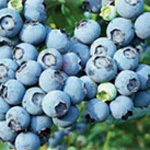 |
| Blueberry | Dwarf Northsky | Snow-white blooms and dense, glossy green foliage appear in the spring, deep sky blue berries ripen in July, and leaves turn brilliant red in autumn. Berries are small and have that rich ?wild? blueberry flavor. Yields range from one to two lbs. per bush. | Self-Pollinating | Call for Pricing |  |
| Blueberry | Brigitta | Late season highbush. Loose clusters. Medium to large, light blue, firm berries. Vigorous upright bush can grow up to 6' tall. White, bell-shaped flowers in the spring. | Self-Pollinating | Call for Pricing | 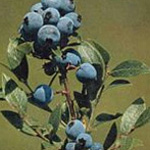 |
| Blueberry | Semi-Dwarf Northland | Early-Mid season highbush. Long, loose clusters. Small, round, medium, firm, dark blue berries. Wild blueberry flavor. Vigorous, moderately spreading 3-4' bush. Extremely productive. | Self-Pollinating | Call for Pricing | 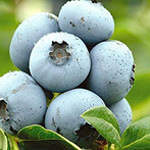 |
| Blueberry | Patriot Hybrid | Patriot is a new variety that produces consistent crops of very large berries that are dark blue and highly flavored. This is a lower growing, spreading shrub to about 4 ft., and is more adaptable to moister soils than other varieties.�Ripens Early. | Self-Pollinating | Call for Pricing | 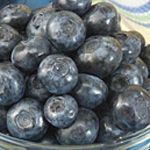 |
| Blueberry | Duke | Early season highbush. The most outstanding early season highbush variety in terms of fruit quality and taste. Medium size, firm, light blue berries. Good color and mild flavor. Vigorous, very productive, multicaned. Upright bush will reach 4-6'. | Self-Pollinating | Call for Pricing |  |
| BACK TO TOP |
| Cherry | Semi Dwarf Bing | Excellent fruit quality. Susceptible to rain splitting. Winter tender and spring frost tender. Yields are not high, with high cull rates. | Require pollination by another sweet cherry plant to produce fruit. | Call for Pricing | 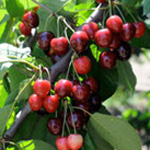 |
| Cherry | Semi Dwarf Stella | Large fruit size and high yield. The tree can overset resulting in small fruit size. Fruit has sweet, juicy flesh and rich flavor. | Require pollination by another sweet cherry plant to produce fruit. | Call for Pricing | 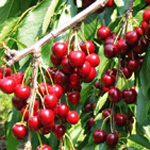 |
| Cherry | Black Tartarian | Vigorous, semi-dwarf tree, the Black Tartarian is a heavy bearer of large, bright purplish-black fruit that is tender, juicy and rich. | Require pollination by another sweet cherry plant to produce fruit. | Call for Pricing | 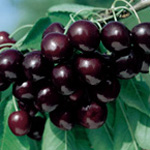 |
| BACK TO TOP |
| Citrus | Algerian Clementine | The tree is showy, grows moderately, and is a lovely ornamental because the fruit stays on the tree several months past maturity. It's dense foliage has an attractive, weeping habit. | Self-Pollinating | Call for Pricing | 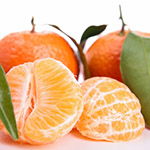 |
| Citrus | Lime | (Dwarf Tree) The Citrus Lime tree bears dwarf mexican limes. Heavy bearer of juicy, lemon-sized fruit in winter to early spring. Grows into a densely branched, dwarf form. Excellent container plant for patio or indoors in cold areas. | Self-Pollinating | Call for Pricing |  |
| Citrus | Dancy Tangerine | The Dancy tree is a large, vigorous, densely-foliated tree, with a tendency to alternate-bearing. The fruit is usually medium in size and oblate to obovoid in form. | Self-Pollinating | Call for Pricing | 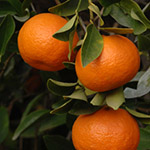 |
| Citrus | Tangerine | (Dwarf Tree) Easily peeled, tasty red-orange fruit in winter from this dwarf evergreen tree. As a landscape specimen it offers year round glossy foliage and fragrant flowers. Produces best with heat and humidity. | Self-Pollinating | Call for Pricing |  |
| Citrus | Calamondin Oranges | (Dwarf Tree) This tree is actually a cross between a kumquat and a tangerine. Woody stems of this dwarf citrus tree are densely covered with oval, glossy green leaves that have a citrusy aroma. The produced fruit is sour and tart! | Self-Pollinating | Call for Pricing | 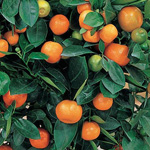 |
| Citrus | Navel Orange | (Dwarf Tree) Delicious, easily peeled, seedless fruit is produced by this dwarf-sized tree. Fragrant flowers in spring and handsome foliage, year round. Adapted to most areas, except desert and cool coastal areas. | Self-Pollinating | Call for Pricing | 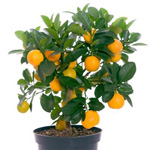 |
| Citrus | Sour Orange | (Dwarf Tree) Also known as Bitter, Bigarade, or Seville orange. The fruit is round, oblate and rough surfaced; containing segments of strongly acidic pulp. Blooms small, highly fragrant, white flowers. | Self-Pollinating | Call for Pricing |  |
| Citrus | Meyer Lemon | (Dwarf Tree) This hybrid dwarf tree produces juicy, full-size 3" in diameter lemons! Use the fruit as you would any other lemon. Great for patio containers. | Self-Pollinating | Call for Pricing |  |
| Citrus | Variegated Meyer Lemon | A lemon variant with variegated leaves and fruit. Will mature to a height of 8'-10'. Blooms fragrant white flowers. The fruit's flesh is pink and tart, making this variant perfect for pink lemonade. | Self-Pollinating | Call for Pricing | 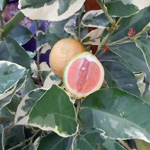 |
| Citrus | Lisbon Lemon Tree | The Lisbon Lemon is a classic, heirloom lemon variety that has stood the test of time. It is a vigorous, hardy tree that produces a heavy crop of beautiful lemons. The fruit is large, smooth-skinned, full of tangy juice, and with few seeds. Deer Resistant. Zone 9-10 | Self-Pollinating | Call for Pricing | 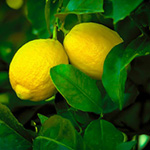 |
| Citrus | Eureka Lemon | This popular lemon tree variant grows true lemons (not hybrid). The large, juicy lemons grow year round and the tree will grow to about 5' in height. Blooms white, fragrant flowers. | Self-Pollinating | Call for Pricing | 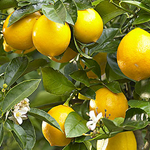 |
| Citrus | Variegated Pink Eureka Lemon | This Eureka Lemon variant blooms white fragrant flowers year-round, and produces juicy yellow fruit with pink flesh. The leaves are variegated. It will grow to a mature height of 10'-15'. | Self-Pollinating | Call for Pricing | 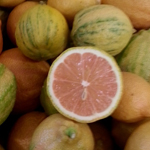 |
| Citrus | Ponderosa Lemon | Also known as the Nine-Pound Lemon, this lemon tree variant produces massive, grapefruit-sized fruit, that are juicy and somewhat tart. This variant bears fruit year-round and produces white, fragrant flowers. | Self-Pollinating | Call for Pricing | 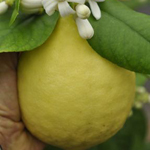 |
| Citrus | Nagami Kumquat | A small, slow-growing citrus tree that produces small bright orange, delicate, tart tasting oval fruit. Due to the rind being sweet, the fruit is usually eaten whole. Blooms white fragrant flowers. | Self-Pollinating | Call for Pricing |  |
| Citrus | Centennial Variegated Kumquat | This variegated kumquat hybrid bears larger fruit than the Nagami Kumquat. Variegated pale yellow leaves are accompanied by yellow and green striped fruit, which turn orange at maturity. | Self-Pollinating | Call for Pricing | 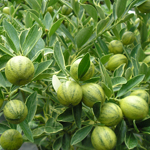 |
| Citrus | Meiwa Kumquat | Meiwa? is known as the Sweet Kumquat with the typical golden-orange colored fruit that other kumquats have. This variant is easily grown in a home environment as long as you have a sunny window and keep the root system healthy by drying the soil a little between waterings. | Self-Pollinating | Call for Pricing | 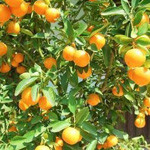 |
| Citrus | Thornless Mexican Lime | The bartender's lime with the added bonus of having no thorns. Mature fruit is small, green to yellow green ripening in July to December. Best grown in areas with long summers and frost free winters. Deer resistant. Zone 9-10 | Self-Pollinating | Call for Pricing | 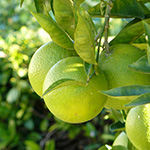 |
| Citrus | Owari Satsuma Mandarin | Owari Satsuma is a small sized tree that can produce a sweet and juicy, medium-sized seedless fruit in large quantities. The fruit ripens early and many people claim that it looks, tastes and peels just like Clementines. Deer Resistant. Zone 9-10 | Self-Pollinating | Call for Pricing | 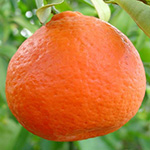 |
| Citrus | Minneola Tangelo | Delightful tangerine-grapefruit hybrid produces juicy, thick skinned orange-red fruit with a rich tangerine flavor. Winter ripening fruit has few seeds. Great in containers, indoors or out. Evergreen. | Self-Pollinating | Call for Pricing | 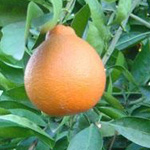 |
| BACK TO TOP |
| Cranberry | 'Stevens' Cranberry | This cranberry plant produces large deep-red fruit. Its an evergreen that likes acidic wet soils. They can work well in home gardens as an edible grown cover, where soils stay moist. They also can produce in a container and hanging baskets if a saucer of water is kept underneath. | Self-Pollinating | Call for Pricing | 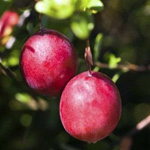 |
| BACK TO TOP |
| Goji Berry | Goji Berry aka' Wolfberry | This plant is originally from China where it is cultivated for food as well as traditional medicines.The foliage is bright silver, the flowers lavender, and the fruit is a orange-red. Goji plants are very cold tolerant, when mature, they are also drought tolerant, although watering will produce more fruit. The leaves and roots are also high in nutrients. | Self-Pollinating | Call for Pricing | 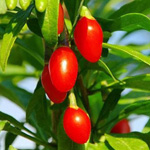 |
| BACK TO TOP |
| Grapes | Canadice Seedless Grapes | Excellent red seedless variety. These medium-size grapes grow in large, well-shouldered, compact clusters. Moderately vigorous vines. Have good winter hardiness. Ripen weeks before Concord. A little susceptible to mildew. | Self-Pollinating | Call for Pricing | 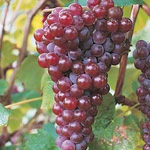 |
| Grapes | Concord Seedless Grapes | This variant is known as "Americas Favorite Grape". The vines produce abundant crops of juicy black grapes that have been used to make prize-winning jams and jellies. Exceptional hardiness, vigor and disease resistance. Seedless. Heat-tolerant. Ripens in mid-September. | Self-Pollinating | Call for Pricing | 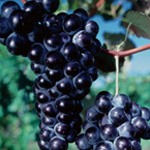 |
| Grapes | Himrod Seedless Grapes | One of the best seedless white (light green) table grapes. The vigorous vines bear large, loose clusters of sweet, juicy fruit that ripen early and keep well. | Self-Pollinating | Call for Pricing | 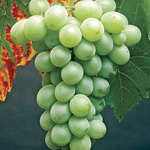 |
| Grapes | Fredonia Seedless Grapes | This variant is the best of the seedless black grapes! �The fruits are large and sweet with a spicy flavor, and blooms in late spring to early summer. Ripening in very late summer, the clusters of deep blue grapes of 'Fredonia' are great for fresh eating, jelly, juice and wine. This grape is similar to Concord and it ripens earlier with larger grapes.� | Self-Pollinating | Call for Pricing | 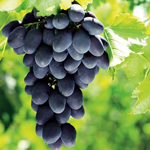 |
| Grapes | Thompson Seedless Grapes | This seedless grape variant is grown for its large bunches of small, sweet, mild-flavored, green grapes. Good mid-season table grape. | Self-Pollinating | Call for Pricing | 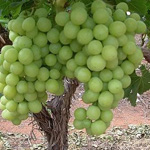 |
| Grapes | Carlos Muscadine | This grape variant is one of the most common bronze colored, juice grape grown. Each vine produces lots of small, 1/2" sized grapes, and is one of the better grape pollinaters. Ripens in mid to late September. | Self-Pollinating, although planting a pollinating partner is recommended to increase crop size. | Call for Pricing | 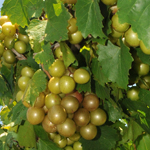 |
| Grapes | Cowart Muscadine | This grape vine variant grows bunches of delicious blue-black grapes. One of the largest and most fruitful muscadines; great for eating fresh, or making juices, jellies, and wine. Ripens in mid-September. | Self-Pollinating, although planting a pollinating partner is recommended to increase crop size. | Call for Pricing | 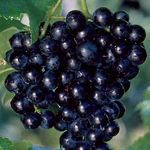 |
| Grapes | Jumbo Muscadine | This fast-growing grape vine variant grows large clusters of huge, dusky black grapes. The grapes ripen in mid to late season and are good for juices, jellies, wine or fresh-eating. | Requires a self-fertile muscadine to fruit. | Call for Pricing | 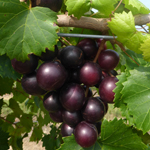 |
| BACK TO TOP |
| Fig | Brown Turkey | Medium sized, bell shaped fruits that are purplish-brown with light pink flesh. This small productive tree will produce delicious sweet figs in summer and usually a secondary crop in early Fall | Self-Pollinating | Call for Pricing | 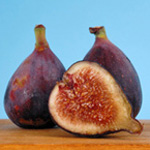 |
| Fig | Celeste | The Celeste fig tree is a variety of fig tree known for its tolerance for cold weather. Celeste figs are small with a purple-brown color. They usually mature in June when the figs begin to droop on the tree. | Self-Pollinating | Call for Pricing | 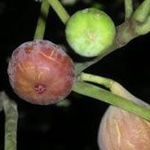 |
| Fig | LSU Purple | Medium size with purple to burgundy fruit. Good vegetative growth for a bushy, well-formed fig bush. | Self-Pollinating | Call for Pricing | 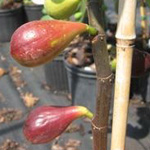 |
| Fig | Texas Everbearing | Medium-large mahogany brown fruit with deep burgundy pulp. Bears young with two good crops, one ripening in May and the second beginning in late June and on thru the summer. Ideal for fresh eating or preserves. Cold hardy and well adapted to many areas. Ripens late June-August. | Self-Pollinating | Call for Pricing | 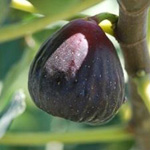 |
| Fig | Hardy Chicago | A brown fig, rich and sweet. Good for potted culture. Hardy Chicago ripens its figs from August until fall frost and will have some fruit in July. Has produced as many as 100 pints of figs in one season. Does extremely well in NC! | Self-Pollinating | Call for Pricing | 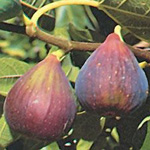 |
| Fig | Black Mission | This popular variety, originating in Spain, produces sweet, pear-shaped fruits that ripen into a rich, dark purple-black with delectable red flesh. Great for jellies and jams, and healthy, on-the-go snacking. | Self-Pollinating | Call for Pricing | 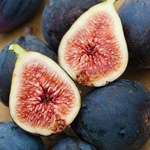 |
| BACK TO TOP |
| Kiwi | Issai Hardy Kiwi | Kiwi arguta 'Issai' is the only self-fertile hardy kiwi. The vine is less vigorous than other kiwi's which enables it to be grown in gardens with limited space. This kiwi plant has been known to fruit in its first year. | Self-Pollinating | Call for Pricing | 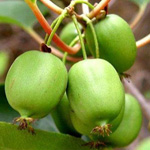 |
| Kiwi | Hardy Kiwi Prolific | This is an early-ripening (mid-Fall) Kiwi variant that produces medium to large, sweet and tasty Kiwi. The skin and flesh carry a reddish-violet color, while the skin itself is smooth, so there is no need to peel before consuming. | Self-Pollinating | Call for Pricing |  |
| BACK TO TOP |
| Loquat | Eriobotrya japonica | The loquat tree blooms in the fall and fruits in early spring. The fruits, in clusters of 4 to 30, are oval, rounded or pear-shaped with smooth or downy, yellow to orange, sometimes red-blushed, skin, and white, yellow or orange, succulent pulp, of sweet to subacid or acid flavor. | Self-Pollinating | Call for Pricing | 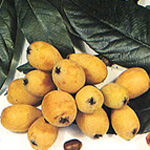 |
| BACK TO TOP |
| Mulberry | 'morus nigra' Dwarf Mulberry | Morus nigra is a medium size black mulberry with a sweet tasty flavor. In pot culture it can be maintained as a dwarf with minor pruning. This ever-bearing mulberry will produce continuously in pots under warm and bright conditions. Mulberries have many health benefits, they strengthen the immune system and are good eyesight. | Self-Pollinating | Call for Pricing | 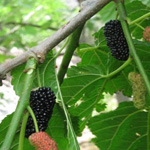 |
| BACK TO TOP |
| Almond | All-In-One Almond | Mid to late harvest season. Tree is small and bears heavy crop of soft shelled non pareil quality nut. | Self-Pollinating | Call for Pricing | 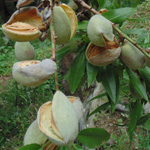 |
| Almond | Hall's Hardy Almond | Late harvest season. Tree is hardy and bears heavy. Nut is large and has a hard shell. Good for late frost areas. | Self-Pollinating (Planting in multiples of 2 or 3 is recommended to ensure pollination) | Call for Pricing | 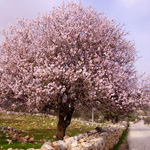 |
| Butternut | Butternut Seedling Tree | The Butternut is a beautiful and and fast growing shade tree which is hardy in colder climates.� This tree produces clusters of sweet nuts which are used in baking and loved by wildlife.� Has a distinctive ridged and furrowed bark. | Self-Pollinating (Planting in multiples of 2 or 3 is recommended to ensure pollination) | Call for Pricing | 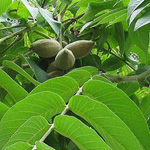 |
| Chestnut | Chinese Chestnut Seedling Tree | A medium sized tree that produces a sweet tasting chestnut for consumption.� This tree is very blight resistant, with a low branching, wide spreading growth habit.� Green leaves turn to yellow, gold and brown in autumn. | Self-Pollinating (Planting in multiples of 2 or 3 is recommended to ensure pollination) | Call for Pricing | 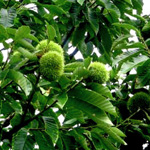 |
| Filbert (Hazelnut) | Casina Hazelnut | A heavy producing variant of round, thin shelled nuts with 50% more meat than other varieties. Grows from 15'-18' tall. | Requires another hazelnut variant for pollination | Call for Pricing | 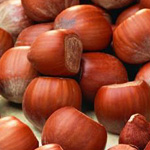 |
| Filbert (Hazelnut) | Jefferson Hazelnut | A hazelnut variant with resistance to Eastern Filbert Blight disease and high resistance to big bud mite. Produces a heavy yield of large flavorful nuts that fill their shells well. Yield is higher than most Filberts. | Requires another hazelnut variant for pollination | Call for Pricing | 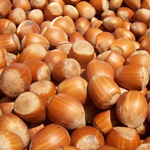 |
| Filbert (Hazelnut) | Duchilly Hazelnut | This hazelnut variant produces long almond-shaped hazelnuts that are sweeter in flavor than other variants. | Requires another hazelnut variant for pollination | Call for Pricing | 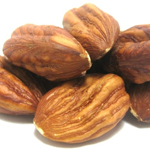 |
| Filbert (Hazelnut) | Eta Hazelnut | This hazelnut variant produces midsized nuts that ripen midseason. Greatly enhances pollination and yields in Jefferson Hazelnut trees. High level of resistance to eastern filbert blight. | Requires another hazelnut variant for pollination | Call for Pricing | 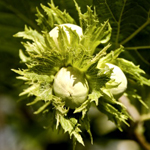 |
| Pecan | Pecan Seedling Tree | This exceptionally hardy pecan tree produces a generous crop of thin-shelled buttery tasting nuts every year. When mature, the tree may reach heights of 50-70 feet tall with a 50-60 foot spread. It is perfect for your yard as a shade tree as it does not shed its leaves until late fall and is practically immune to pests. | Requires another pecan variant for pollination | Call for Pricing | 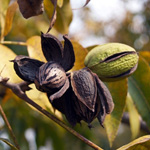 |
| Pecan | Pawnee Pecan | An excellent choice for people with limited space due to its relatively small size, only 30' tall and wide. Pawnee is an exceptional pollinator. The nuts are large and sweet. | Type I Pecan Tree - (Early Season Pollinator) | Call for Pricing | 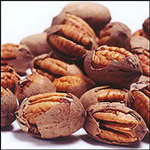 |
| Pecan | Stuart Pecan | The Stuart Pecan Tree is one of the most common cultivars of pecans grown in the southeastern US. Nuts of the Stuart are medium sized, producing normally around 52 nuts per pound, with a thicker shell than some of the other papershell pecan varieties. | Type II Pecan Tree - (Late Season Pollinator) | Call for Pricing | 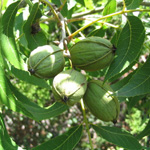 |
| Walnut | Black Walnut Seedling Tree | Black Walnut is highly prized for its beautiful wood and delicious nuts. This variant can grow to be 70'-100' tall and about 40' wide. | Self-pollinating. | Call for Pricing | 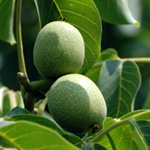 |
| Walnut | Carpathian Walnut | A very hardy variety; fast growing tree that will survive very cold weather. Nuts are large with a soft shell that cracks easily and has delicious flavor. Grows 40'-60' tall. | Requires another Walnut variant for pollination | Call for Pricing | 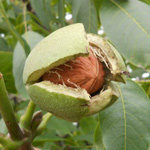 |
| Walnut | Franquette Walnut | Late blooming with a high quality nut that is oblong in shape and pointed, with a mild taste. | Partially self-fruitful. | Call for Pricing | 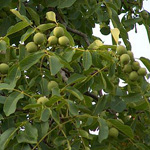 |
| Walnut | Manregion Walnut | This is a traditional English walnut variant produces large, thin-shelled walnuts that are easy to crack. Hardy late bloomer. | Partially self-fruitful; will produce heavier yield when planted with 2 other variants. | Call for Pricing | 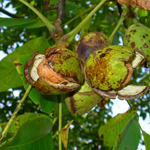 |
| BACK TO TOP |
| Olive | Mission | The Mission Olive tree bears oval fruit which is used whether for green or black olive use for pickling and also for the commercial pressing of olive oil. The tree can grow up to 40 ft. tall and the trees are cold hardy to 5 degrees F. before showing damage, but even then they will resprout. | Self-Pollinating | Call for Pricing |  |
| Olive | Mediterranean | Bears small, oblong green olives that ripen to deep, rich black in early to mid fall. Matures to 8-10 ft. tall if kept in a container, but may get bigger if grown in a suitable climate. Prefers full sun. | Self-Pollinating | Call for Pricing | 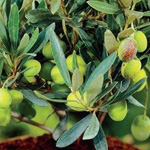 |
| BACK TO TOP |
| Pawpaw | Asimina Triloba | The paw paw is one of the largest edible fruits indigenous to the United States. The fruit of the pawpaw is a large, yellowish-green to brown berry, 2?6" long and 1?3" broad, weighing from 0.7?18 oz, and containing several brown seeds 1/2" to 1" in diameter embedded in the soft fruit. The fruits begin developing after the plant flowers; they are initially green, maturing by September or October to yellow or brown. | Cross pollination with another genetic variety recommended! | Call for Pricing |  |
| BACK TO TOP |
| Peach | Belle of Georgia Dwarf | Ripens shortly before Elberta. A consistent, heavy producer. Showy flowers in spring. Freestone. White flesh. | Self-Pollinating | Call for Pricing | 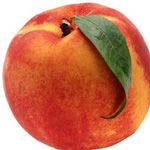 |
| Peach | Red Haven Dwarf | A round, deeply blushed freestone. Golden yellow, excellent quality flesh. Ripensearly and handles well. | Self-Pollinating | Call for Pricing | 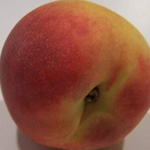 |
| Peach | Elberta Dwarf | Large fruit with high quality, freestone flesh. Excellent for home use. Dwarf, self-fertile tree. Ripens in August. Yellow flesh | Self-Pollinating | Call for Pricing |  |
| Peach | Bonfire | A compact dwarf purple-leaf peach. White-fleshed fruit streaked with red ripens late. A stunning landscape specimen with showy, pink double flowers. Can be grown in a patio pot.Fruits are cling stone (seed doesn't come free from the flesh easily) and rubbery when ripe. Best for canning. Also, makes a red pie. | Self-Pollinating | Call for Pricing |  |
| Peach | Flat Wonderful | Brilliant maroon foliage early, to green beginning in July. Sweet spicy fruit with a very desirable chewy texture. Yellow flesh. | Self-Pollinating | Call for Pricing | 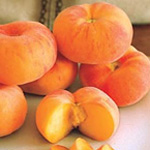 |
| Peach | Galactica | This peach is referred to as a donut peach or flat peach for it saucer like shape. It is freestone with white flesh. | Self-Pollinating | Call for Pricing | 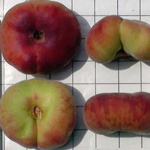 |
| BACK TO TOP |
| Pear | Keiffer Dwarf | Large, yellow fruit. Juicey flesh. Good for home use. Pick hile firm; store in cool place. Hardy, vigorous tree. | Self-Pollinating | Call for Pricing | 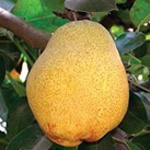 |
| Pear | Bartlett Dwarf | Large fruit with juicy, sweet and tender white flesh. Excellent for eating fresh. Ripens early fall. | Require pollination by another pear to produce fruit. Bartlett pears are also different in that they cannot pollinate each other, but can pollinate almost all other pears. | Call for Pricing | 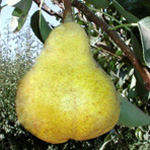 |
| Pear | Moonglow Dwarf | Early ripening variety with sweet, mild, juicy flesh. Hardy, blight resistant. Productive. | Requires pollination by another pear to produce fruit. | Call for Pricing | 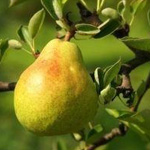 |
| Pear | Ayers Dwarf | Early ripening variety with sweet, mild, juicy flesh. Hardy, blight resistant. Productive. | Requires pollination by another pear to produce fruit. | Call for Pricing | 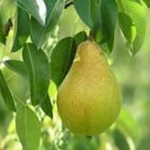 |
| Pear | Shinseiki Asian | A pear tree that produces round, yellow fruits, which are crisp, and have a very sweet and juicy white flesh. | Requires another Asian pear variety or a Bartlett for proper pollination. | Call for Pricing | 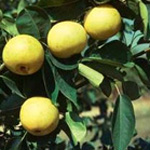 |
| BACK TO TOP |
| Persimmon | Hachiya | Skin is glossy, deep orange-red; flesh dark-yellow with occasional black streaks; astringent until fully ripe and soft, then sweet and rich. Seedless or with a few seeds. Midseason to late. Much used in Japan for drying. Tree vigorous, | Self-Pollinating | Call for Pricing | 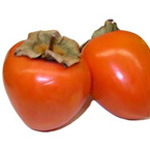 |
| Persimmon | Hana Fuyu | Oblate, non-astringent and usually seedless; late-midseason; tree is small, bears regularly but yield is low; prone to premature shedding of fruit | Self-Pollinating | Call for Pricing | 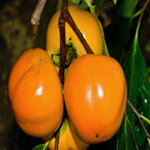 |
| Persimmon | Jiro | Second to 'Fuyu' in importance in Japan; is of high quality and ships well. The fruit is colorful and the tree vigorous in Florida. | Self-Pollinating | Call for Pricing | 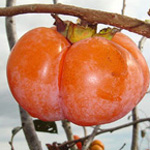 |
| Persimmon | Fuyu | Oblate, faintly 4-sided. Skin is deep-orange; flesh light-orange; firm when ripe; non-astringent even when unripe; with few seeds or none. Keeps well | Self-Pollinating | Call for Pricing | 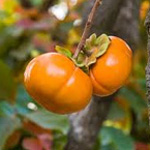 |
| Persimmon | Masamoto Wasa Fuyu | An earlier ripening bud sport of the Fuyu Persimmon. The tree is moderately vigorous and of medium size. | Self-Pollinating | Call for Pricing | 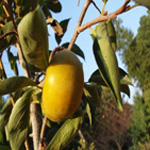 |
| Persimmon | Tamopan | Tamopan persimmon is one of the cultivars in the astringent type. It takes on an unusual shape. It is usually large and broad with a deep indent around the top, which makes it looks like an oriental bowl with a thick cap on top. Tamopan persimmon is sweet when fully ripe and will become very soft and mushy. | Self-Pollinating | Call for Pricing | 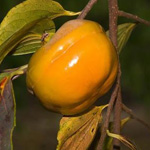 |
| Persimmon | Tanenashi Persimmon | This persimmon variant displays yellow to red-orange skin, and nearly seedless, yellow-orange flesh. Once fully ripened sometime from Sept.-Oct., the soft flesh will have a sweet, rich flavor. This is the best variety for drying. | Self-Pollinating | Call for Pricing | 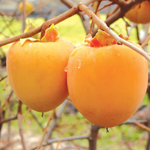 |
| BACK TO TOP |
| Pineapple | Pineapple Plant | A dwarf variant of the shallow-rooted tropical Pineapple tree. Although the fruit does not get as large as those found in grocery stores, it is still edible and delicious. This plant is also very ornamentally attractive. | Self-Pollinating | Call for Pricing | 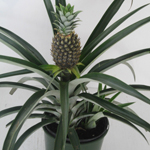 |
| BACK TO TOP |
| Plum | Burbank | Burbank is a natural semi-dwarf, reaching only 12-15' with a graceful spreading form. It is super-sweet, red mottled yellow in color, and has a deep yellow flesh with a very good flavor. This plum is semi-freestone, which means it partially separates from the pit. | Require pollination by another plum to produce fuit. | Call for Pricing | 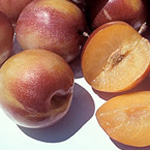 |
| Plum | Santa Rosa | These trees produce an abundant harvest of sweetly flavored, dark purple fruit each year. Adaptable to most soil types . Takes up very little space, yet produces bushels of fruit. | Self-Pollinating | Call for Pricing | 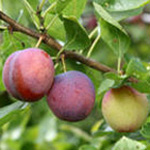 |
| Plum | Byron Gold | Byron Gold is yellow fleshed, yellow skinned fruit. | Require pollination by another plum plant to produce fruit. | Call for Pricing |  |
| BACK TO TOP |
| Pomegranate | Russian Giant | This rare pomegranate variety was discovered growing in central Georgia, USA. Fruits of the Giant Russian are huge and can grow as big as small grapefruits! The tree makes a beautiful ornamental with brilliant orange flowers that cover the tree in spring. Cold hardy. | Self-Pollinating | Call for Pricing | 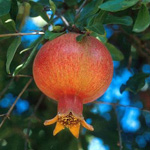 |
| Pomegranate | Wonderful | The Pomegranate�tree is an ornamental shrub producing fruit with a hard, leathery deep red or yellow rind. When opened the fruit exposes shimmering translucent kernels. The juicy flesh is tart-sweet and surrounds nutlike seeds that are edible and add a bit of a crunch to the overall texture. | Self-Pollinating | Call for Pricing |  |
| Pomegranate | Mediterranean Pomegranate Tree | This deciduous Pomegranate tree variant is native to the middle east/mediterranean area. The tree bears gorgeous red/orange flowers and red, sweet and tart seed-like fruit. | Self-Pollinating | Call for Pricing | 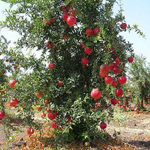 |
| BACK TO TOP |
| Quince | Dwarf Pineapple | An attractive ornamental with a large, white to pink spring flower. Its leaves are dark green with whitish undersides. Skin is golden yellow and smooth. Fruit has a slightly pineapple taste. | Self-Pollinating | Call for Pricing | 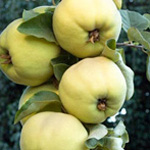 |
| Quince | Dwarf Rich's | Extrememly large fruit with lemon-yellow skin. Fruit is fragrant and covered with downy hairs. Tree does well in most regions. | Self-Pollinating | Call for Pricing | 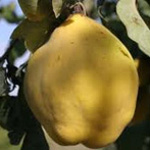 |
